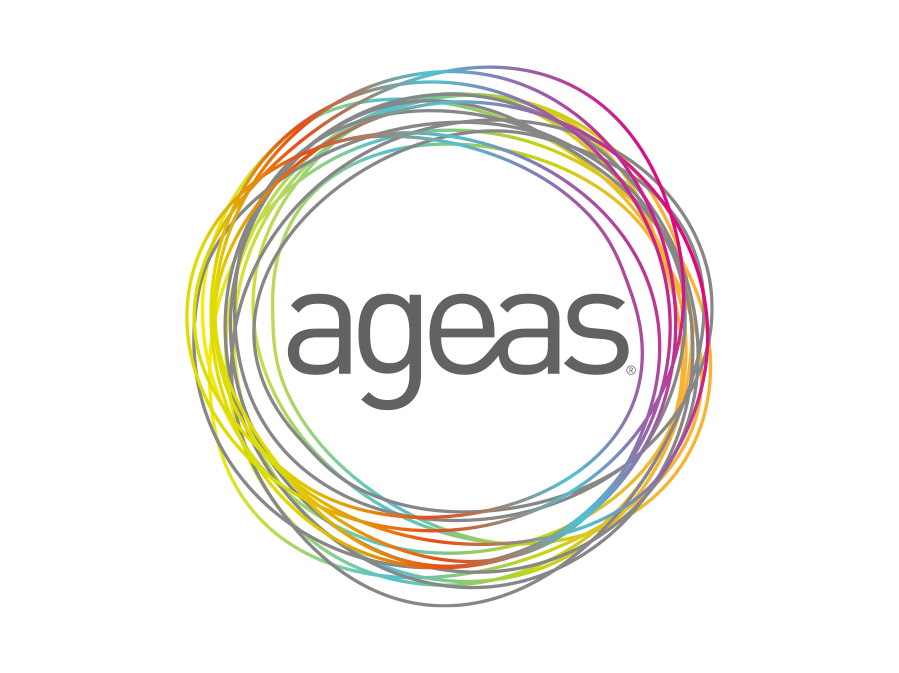2025 Life Blueprint: Unlocking Unbreakable Wellbeing

Beyond Resolutions: How to Future-Proof Your Health, Wealth, and Peace of Mind in an Era of Unpredictability. Discover the essential strategies for building a resilient life in 2025, where latest health projections reveal 1 in 2 UK residents will face a cancer diagnosis in their lifetime. Learn how a strategic shield of Family Income Benefit, Income Protection, Life and Critical Illness Cover, plus tailored Personal Sick Pay for riskier jobs like nurses, electricians, and tradespeople, safeguards your financial future. Explore how private health insurance unlocks rapid access to specialist care, minimizing stress and accelerating recovery, empowering you to live fully and secure your legacy, even with solutions like Gift Inter Vivos.
The turn of a new year often brings a flurry of resolutions—fleeting promises to eat better, exercise more, or save money. But in 2025, living in an era defined by unprecedented change and uncertainty, these surface-level goals are no longer enough. We need to move beyond resolutions and towards resilience. We need a blueprint.
This is not about scaremongering; it's about empowerment. A sobering projection from Cancer Research UK estimates that 1 in 2 people in the UK born after 1960 will be diagnosed with some form of cancer during their lifetime. This single statistic underscores a profound truth: our health, and by extension our financial stability, is more fragile than we like to admit.
An unexpected illness doesn't just impact your physical wellbeing. It sends shockwaves through your finances, your family's stability, and your future plans. The question is no longer if you will face a challenge, but how you will be prepared when you do.
This guide is your 2025 Life Blueprint. It’s a comprehensive strategy for building unbreakable wellbeing by intertwining proactive health management with a robust financial safety net. We will explore how to fortify your body and mind, and then how to construct a strategic shield using modern insurance solutions. From safeguarding your income to accelerating medical treatment and securing your legacy, this is your definitive plan for future-proofing your life.
The 2025 Reality Check: Navigating Health and Financial Headwinds
To build a resilient future, we must first understand the landscape. The start of 2025 is marked by a unique convergence of challenges that impact every household in the UK.
The Shifting Health Horizon:
- The 1-in-2 Statistic: As mentioned, the projection that half of us will face a cancer diagnosis is a game-changer. It transforms a 'what if' scenario into a 'when and how' planning imperative. Advances in treatment mean survival rates are improving, but recovery is often a long and costly journey.
- Chronic Conditions on the Rise: Beyond cancer, the prevalence of long-term conditions like heart disease, diabetes, and respiratory illnesses continues to grow. Data from the NHS shows that around 1 in 4 adults in England live with two or more long-term health conditions. These often require ongoing management and can impact one's ability to work full-time.
- Mental Health in Focus: The conversation around mental health has opened up, but the challenge is growing. The Office for National Statistics (ONS) reports that rates of depression in Great Britain remain elevated, impacting personal lives and workplace productivity.
The financial fallout from a serious health issue can be devastating. Statutory Sick Pay (SSP) provides a minimal safety net of just £116.75 per week (2024/25 rate). Could your family survive on that? For the self-employed, there isn't even that basic provision. The loss of income, coupled with potential costs for travel to appointments, home modifications, or private care, can erode savings and create immense stress at the worst possible time.
Pillar 1: Fortifying Your Wellbeing - The Proactive Defence
Your first line of defence isn't an insurance policy—it's your own health. Building a resilient body and mind drastically improves your quality of life and can reduce your risk of developing serious conditions. This is about making smart, sustainable choices, not drastic, short-lived changes.
The Fuel: Nutrition for Longevity
What you eat is the cornerstone of your health. Modern nutritional science has moved beyond simple calorie counting to focus on the quality and function of food.
- Embrace a Whole-Food Diet: Prioritise fruits, vegetables, lean proteins, and whole grains. These foods are packed with vitamins, minerals, and antioxidants that combat cellular damage and reduce inflammation—a key driver of chronic disease.
- Nourish Your Gut: A healthy gut microbiome is linked to improved immunity, better mental health, and a lower risk of numerous diseases. Incorporate fibre-rich foods and fermented items like kefir, natural yoghurt, and kimchi.
- Mindful Indulgence: A sustainable diet has room for treats. The key is moderation and making conscious choices, not enforcing rigid restrictions that are destined to fail.
Here at WeCovr, we believe in supporting our clients' holistic wellbeing. That's why we provide our customers with complimentary access to CalorieHero, our AI-powered calorie and nutrition tracking app. It’s a simple, effective tool to help you understand your eating habits and build a healthier relationship with food, going beyond the protection of a policy to actively support your health goals.
The Movement: Building a Body for Life
Exercise is non-negotiable for physical and mental resilience. The key is consistency and finding activities you genuinely enjoy.
- Functional Fitness: Focus on movements that support your daily life—lifting, bending, twisting. This builds practical strength that helps prevent injury, whether you're a tradesperson on a building site or a parent lifting a toddler.
- Cardiovascular Health: Aim for at least 150 minutes of moderate-intensity activity (like a brisk walk, cycling, or swimming) or 75 minutes of vigorous activity (like running or a HIIT class) per week, as recommended by the NHS.
- Don't Forget Strength: Resistance training (using weights, bands, or your own body weight) is crucial for maintaining muscle mass and bone density as you age. This is vital for metabolic health and long-term mobility.
The Recharge: The Superpower of Sleep
Sleep is not a luxury; it is a critical biological function. Poor sleep is linked to a weakened immune system, poor cognitive function, weight gain, and an increased risk of chronic health conditions.
- Prioritise a Routine: Go to bed and wake up around the same time each day, even on weekends. This helps regulate your body's internal clock.
- Create a Sanctuary: Your bedroom should be a dark, quiet, and cool environment. Banish screens for at least an hour before bed, as the blue light can interfere with the production of the sleep hormone melatonin.
- Manage Stress: If racing thoughts keep you awake, try a calming pre-sleep ritual like reading, gentle stretching, or a guided meditation app.
Pillar 2: The Financial Shield - Your Insurance Safety Net
Proactive health measures reduce your risk, but they don't eliminate it. A strategic financial shield is essential to protect you and your loved ones from the economic fallout of life's unpredictable events. This isn't about buying every policy available; it's about understanding your unique vulnerabilities and deploying the right protection.
Life and Critical Illness Cover: The Cornerstones of Protection
This is often the first type of cover people consider, and for good reason. It provides a tax-free lump sum payment in two key scenarios:
- Life Cover: Pays out upon your death, providing your family with the funds to clear a mortgage, cover funeral costs, and maintain their standard of living.
- Critical Illness Cover (CIC): Pays out upon the diagnosis of a specified serious condition, such as cancer, heart attack, or stroke. This money is for you to use while you are alive. It can replace lost income, pay for private treatment, or simply give you the financial breathing room to focus on recovery without worrying about bills.
Given the 1-in-2 cancer statistic, the value of Critical Illness Cover has never been more apparent. It acts as a financial buffer, preventing a health crisis from becoming a financial catastrophe.
| Feature | Life Cover | Critical Illness Cover |
|---|---|---|
| Payout Trigger | Death | Diagnosis of a specified illness |
| Who Benefits | Your nominated beneficiaries | You, the policyholder |
| Primary Purpose | Legacy, debt clearance | Financial support during recovery |
| Example Use | Pay off the mortgage | Replace income during treatment |
Scenario: Sarah, a 35-year-old graphic designer and mother of two, is diagnosed with breast cancer. Her Critical Illness Cover pays out £100,000. This allows her to take a year off work to focus on her treatment and recovery, pay for childcare, and reduce her mortgage payments, all without draining the family's savings.
Income Protection: Your Personal Salary in a Crisis
While Critical Illness Cover provides a one-off lump sum, Income Protection (IP) is designed to provide a regular, recurring income if you're unable to work due to any illness or injury. It's arguably the most important protection policy for any working adult.
- How it Works: After a pre-agreed waiting period (the 'deferred period'), the policy starts paying you a monthly, tax-free income. This continues until you can return to work, the policy term ends, or you retire, whichever comes first.
- Why it's Crucial: Statutory Sick Pay (SSP) is minimal. Many company sick pay schemes only last for a few months. For the self-employed, freelancers, and contractors, there is often no sick pay at all. Income Protection is designed to bridge this enormous gap.
Income Gap Reality Check:
| Your Monthly Salary | SSP Monthly (approx.) | Company Sick Pay (3 months) | Income Protection (60% of salary) |
|---|---|---|---|
| £3,000 | £505 | £3,000 (then drops to SSP) | £1,800 (until you recover) |
| £5,000 | £505 | £5,000 (then drops to SSP) | £3,000 (until you recover) |
As the table shows, the financial cliff-edge after company sick pay ends is steep. Income Protection provides a stable, long-term solution.
Family Income Benefit: A Smart Alternative for Young Families
Family Income Benefit is a type of life insurance, but instead of paying a single lump sum, it pays out a regular, tax-free monthly or annual income to your family from the time of your death until the end of the policy term.
It's often a more affordable and manageable solution for families with young children. The primary goal is to replace the deceased parent's lost income to cover ongoing household bills and living costs, ensuring the children are supported until they become financially independent.
Scenario: Mark takes out a 20-year Family Income Benefit policy when his daughter is born, designed to pay £2,000 a month. If he were to pass away 5 years into the policy, his family would receive £2,000 every month for the remaining 15 years, providing stable financial support during their most crucial years.
Personal Sick Pay: Essential Cover for Hands-On Professions
For those in riskier, manual jobs—tradespeople, electricians, plumbers, nurses, construction workers—even a minor injury like a broken wrist can mean weeks or months off work with no income. Traditional Income Protection with a 3 or 6-month waiting period might not be suitable.
This is where Personal Sick Pay (also known as short-term income protection) comes in. It's specifically designed for this scenario:
- Shorter Waiting Periods: You can often choose a waiting period of just one or two weeks.
- Short-Term Payouts: The policy typically pays out for 1 or 2 years, covering you for the most common types of illness and injury that prevent you from working.
- Affordability: Because the cover is short-term, premiums are often more budget-friendly.
It's the perfect solution to cover your immediate bills and financial commitments while you recover from an accident or short-term illness, without the longer-term commitment of a full IP policy.
Navigating these options can be complex. A broker like WeCovr is invaluable here. We can assess your individual circumstances—your job, your family, your budget—and search the entire market to find the right combination of policies that provide comprehensive protection at the most competitive price.
Pillar 3: The Accelerator - Unlocking Rapid Healthcare with PMI
While the NHS provides exceptional care, the system is under immense pressure. As of early 2025, waiting lists for routine treatments remain at historically high levels. These delays don't just prolong physical discomfort; they create anxiety, impact your ability to work, and affect your mental health.
Private Medical Insurance (PMI) is the accelerator pedal for your healthcare. It runs parallel to the NHS, giving you and your family fast-track access to private specialists, diagnostics, and treatment.
The Power of Speed and Choice
- Bypass Waiting Lists: The core benefit of PMI is speed. Get a prompt referral to a specialist, often within days, and undergo diagnostic scans like MRIs or CTs within a week.
- Choice and Control: You can choose your specialist, your hospital, and the time of your treatment, fitting it around your work and family life.
- Comfort and Privacy: Treatment is typically in a private hospital with an en-suite room, providing a more comfortable and restful environment for recovery.
- Access to Advanced Treatments: Some policies provide access to new drugs or treatments that may not yet be available on the NHS due to funding decisions.
A Tale of Two Journeys (Minor Knee Surgery):
| Stage | NHS Journey | PMI Journey |
|---|---|---|
| GP Visit | Week 1 | Week 1 |
| Specialist Referral | Wait: 3-6 months | Wait: 1-2 weeks |
| MRI Scan | Wait: 6-8 weeks | Wait: 1 week |
| Surgery | Wait: 9-12 months | Wait: 3-4 weeks |
| Total Time | 12-18+ months | 6-8 weeks |
For a self-employed person or a key company director, the difference between an 18-month wait in discomfort and a 2-month journey back to full health is monumental. PMI is not a luxury; it's a strategic tool for minimising disruption and accelerating recovery.
The Director's Chair: Tailored Protection for Business Owners
If you run your own business, you are the business. Your health and ability to work are inextricably linked to the company's survival and success. Standard personal protection is vital, but business owners, directors, and the self-employed have unique needs that require specialised solutions.
Key Person Insurance
Who is indispensable to your business? It might be you, a co-founder with unique technical skills, or a top salesperson. If that person were to die or suffer a critical illness, the business could face a financial crisis.
Key Person Insurance is a policy taken out and paid for by the business on the life of that key individual. If the worst happens, the policy pays a lump sum directly to the business. This money can be used to:
- Recruit a replacement.
- Cover lost profits during the disruption.
- Reassure lenders and investors.
- Clear business debts.
It's a business continuity plan in the form of an insurance policy.
Executive Income Protection
This is Income Protection for a company's most valuable assets: its directors and senior employees. The key difference is that the company pays the premiums, not the individual.
This is highly tax-efficient. The premiums are typically considered an allowable business expense, and it provides a powerful employee benefit that is far more comprehensive than a standard sick pay scheme. It ensures that a key leader's income is protected, allowing them to focus on recovery without financial pressure, while the business is assured of their eventual return.
Relevant Life Cover
This is a tax-efficient death-in-service benefit for individual employees, including company directors. It is a life insurance policy paid for by the business, but the payout goes directly to the employee's family or a trust, completely free of Inheritance Tax.
- Tax Efficiency: Premiums are not treated as a P11D benefit for the employee and are usually an allowable business expense for the company.
- For Small Businesses: It's a fantastic way for small limited companies that are too small to set up a full group life scheme to offer a highly-valued death-in-service benefit.
| Protection Type | Who Pays? | Who Receives Payout? | Primary Purpose |
|---|---|---|---|
| Key Person | The Business | The Business | Business continuity, cover lost profit |
| Executive IP | The Business | The Employee | Replaces income for a key employee |
| Relevant Life | The Business | Employee's Family | Tax-efficient death-in-service benefit |
Securing Your Legacy: Advanced Financial Planning
A truly resilient life blueprint extends beyond your own lifetime. It involves ensuring the wealth you have built is passed on efficiently to the next generation. Inheritance Tax (IHT) can be a significant hurdle, but with smart planning, its impact can be minimised.
Gift Inter Vivos Insurance: Protecting Your Gifts
Many people want to help their children or grandchildren during their lifetime, perhaps by gifting a deposit for a house. However, if you pass away within seven years of making a large gift, it may still be considered part of your estate for Inheritance Tax purposes.
This is where Gift Inter Vivos (GIV) insurance comes in. It's a specific type of life insurance policy designed to cover the potential IHT liability on a gift.
- How it Works: You make a gift (e.g., £100,000 to your child). You take out a GIV policy for a 7-year term, with the sum assured matching the potential IHT bill.
- The 7-Year Rule: If you survive for 7 years after making the gift, it becomes fully exempt from IHT, and the policy is no longer needed.
- Taper Relief: If you die between years 3 and 7, the IHT due on the gift reduces on a sliding scale. The GIV policy can be structured to decrease in line with this 'taper relief'.
It provides peace of mind, ensuring your generous gift doesn't create an unexpected tax bill for your loved ones.
Your 2025 Blueprint in Action: A Step-by-Step Guide
Reading this article is the first step. Now it's time to take action. Use this simple guide to build your own personal blueprint for a resilient 2025.
Step 1: Conduct a Personal Audit Take stock of your current situation.
- Health: Be honest about your diet, exercise, and sleep habits. Where is the single biggest area for improvement?
- Finances: What is your monthly income and outgoings? How much do you have in savings?
- Existing Cover: Dig out any existing insurance policies you have. Do you know what they cover? Are they still fit for purpose? Does your employer provide any benefits?
Step 2: Prioritise Your Wellbeing Commit to one small, consistent change. Don't try to overhaul everything at once.
- Example: Add a 20-minute walk to your lunch break.
- Example: Swap one sugary drink for water each day.
- Example: Turn off all screens 30 minutes before your intended bedtime.
Step 3: Quantify Your Financial Risk Understand the numbers.
- If your income stopped tomorrow, how long would your savings last?
- What are your essential monthly outgoings (mortgage/rent, bills, food)? This is the minimum income you would need to replace.
- What are your major debts (mortgage, loans)? This is the amount your family might need to clear if you were no longer around.
Step 4: Match Protection to Your Needs Review the sections above and identify which solutions are most relevant to you.
- Young family? Family Income Benefit and Life/Critical Illness Cover are priorities.
- Self-employed tradesperson? Personal Sick Pay and Income Protection are essential.
- Company director? Explore Executive Income Protection and Relevant Life Cover.
- Worried about NHS waits? Consider Private Medical Insurance.
Step 5: Seek Expert, Impartial Guidance The world of protection insurance is complex, and the cheapest policy is rarely the best. The definitions of illnesses, the terms and conditions, and the claims philosophies vary significantly between insurers.
This is where working with an expert adviser like WeCovr is critical. We don't just sell policies; we provide clarity. We take the time to understand your unique life blueprint and then use our expertise to search the entire UK market, comparing policies from all the leading insurers. Our goal is to ensure you get the most comprehensive cover for your needs and budget, giving you true peace of mind.
Conclusion: From Resolution to Resilience
Building an unbreakable life in 2025 isn't about making a few fleeting New Year's resolutions. It’s about a fundamental shift in mindset—from reactive hope to proactive strategy. It's about acknowledging the realities of our modern world and taking decisive, intelligent steps to protect what matters most.
By integrating daily wellbeing practices with a robust and tailored financial shield, you create a powerful synergy. Your health choices reduce your risk, while your insurance choices mitigate the financial impact if the unexpected happens. This dual approach is the key to unlocking true peace of mind.
Your 2025 Life Blueprint empowers you to live more fully, safe in the knowledge that you have built a fortress of resilience around yourself, your family, and your future.
Frequently Asked Questions
Is protection insurance expensive?
I'm young and healthy, do I really need cover?
What's the difference between Income Protection and Critical Illness Cover?
Can I get cover if I have a pre-existing medical condition?
How does WeCovr help?
Why life insurance and how does it work?
What is Life Insurance?
Life insurance is an insurance policy that can provide financial support for your loved ones when you or your joint policy holder passes away. It can help clear any outstanding debts, such as a mortgage, and cover your family's living and other expenses such costs of education, so your family can continue to pay bills and living expenses. In addition to life insurance, insurance providers offer related products such as income protection and critical illness, which we will touch upon below.How does it work?
Life insurance pays out if you die. The payout can be in the form of a lump sum payment or can be paid as a replacement for a regular income. It's your decision how much cover you'd like to take based on your financial resources and how much you'd like to leave to your family to help them deal with any outstanding debts and living expenses. Your premium depends on a number of factors, including your occupation, health and other criteria.The payout amount can change over time or can be fixed. A level term or whole of life policy offers a fixed payout. A decreasing term policy offers a payout that decreases over the term of the cover.
With critical illness policies, a payout is made if you’re diagnosed with a terminal illness with a remaining life expectancy of less than 12 months. While income protection policies ensure you can continue to meet your financial commitments if you are forced to take an extended break from work. If you can’t work because you’ve had an accident, fallen sick, or lost your job through no fault of your own, income protection insurance pays you an agreed portion of your salary each month.
Income protection is particularly helpful for people in dangerous occupations who want to be sure their mortgage will always be covered. Income protection only covers events beyond your control: you’re much less likely to be covered if you’re fired from your job or if you injure yourself deliberately.
Questions to ask yourself regarding life insurance
Just ask yourself:👉 Who would pay your mortgage or rent if you were to pass away or fall seriously ill?
👉 Who would pay for your family’s food, clothing, study fees or lifestyle?
👉 Who would provide for the costs of your funeral or clear your debts?
👉 Who would pay for your costs if you're unable to work due to serious illness or disability?
Many families don’t realise that life, income protection and critical illness insurance is one of the most effective ways to protect their finances. A great insurance policy can cover costs, protect a family from inheriting debts and even pay off a mortgage.
Many would think that the costs for all the benefits provided by life insurance, income protection insurance or critical illness insurance are too high, but the great news is in the current market policies are actually very inexpensive.
Benefits offered by income protection, life and critical illness insurance
Life insurance, income protection and critical illness insurance are indispensable for every family because a child loses a parent every 22 minutes in the UK, while every single day tragically 60 people suffer major injuries on the UK roads. Some people become unable to work because of sickness or disability.Life insurance cover pays out a lump sum to your family, loved ones or whomever you choose to get the money. This can be used to secure the financial future of your loved ones meaning they would not have to struggle financially in the event of your death.
If it's a critical illness cover, the payout happens sooner - upon diagnosis of a serious illness, disability or medical condition, easing the financial hardship such an event inevitably brings.
Income protection insurance can be very important for anyone who relies on a pay check to cover their living costs, but it's especially important if you’re self-employed or own a small business, where your employment and income is a bit less stable. It pays a regular income if you can't work because of sickness or disability and continues until you return to paid work or you retire.
In a world where 1 in 4 of us would struggle financially after just four weeks without work, the stark reality hits hard – a mere 7% of UK adults possess the vital shield of income protection. The urgency of safeguarding our financial well-being has never been more palpable.
Let's face it – relying on savings isn't a solution for everyone. Almost 25% of people have no savings at all, and a whopping 50% have £1,000 or less tucked away. Even more concerning, 51% of Brits – that's a huge 27 million people – wouldn't last more than one month living off their savings. That's a 10% increase from 2022.
And don't even think about state benefits being a safety net. The maximum you can expect from statutory sick pay is a mere £109.40 per week for up to 28 weeks. Not exactly a financial lifeline, right?
Now, let's tackle a common objection: "But I have critical illness insurance. I don't need income protection too." Here's the deal – the two policies apply to very different situations. In a nutshell:
- Critical illness insurance pays a single lump sum if you're diagnosed with or undergo surgery for a specified potentially life-threatening illness. It's great for handling big one-off expenses or debts.
- Income protection, on the other hand, pays a percentage of your salary as a regular payment if you can't work due to illness or injury. It's the superhero that tackles those relentless monthly bills.
Types of life insurance policies
Common reasons for getting a life insurance policy are to:✅ Leave behind an amount of money to keep your family comfortable
✅ Protect the family home and pay off the mortgage in full or in part
✅ Pay for funeral costs
Starting from as little as a couple of pounds per week, you can do all that with a Life Policy.
Level Term Life Insurance
One of the simplest forms of life insurance, level term life insurance works by selecting a length of time for which you would want to be covered and then deciding how much you would like your loved ones to receive should the worst happen. Should your life insurance policy pay out to your family, it would be in a lump sum amount that can be used in whatever way the beneficiary may wish.
Decreasing Term Life Insurance
Decreasing term life insurance works in the same way as level term, except the lump sum payment amount upon death decreases with time. The common use for decreasing term life cover is to protect against mortgage repayment as the lump sum decreases along with the principal of the mortgage itself.
Increasing Term Life Insurance
Increasing term life insurance aims to pay out a cash sum growing each year if the worst happens while covered by the policy. With increasing term life cover amount insured increases annually by a fixed amount for the length of the policy. This can protect your policy's value against inflation, which could be advantageous if you’re looking to maintain your loved ones’ living standards, continue paying off your mortgage in line with its repayment schedule and cover your children’s education fees.
Whole of Life Insurance
Whereas term life insurance policies only pay out if you pass away during their term, whole of life insurance pays out to your beneficiaries whenever this should happen. The most common uses for whole life insurance are to cover the costs of a funeral or as a vehicle for your family's inheritance tax planning.
Family Income Benefit
Family income benefit is a somewhat lesser-known product in the family of life insurance products. Paying out a set amount every month of year to your beneficiaries, it is the most cost-effective way of maintaining your family's living standards to an age where you'd expect them to be able to support themselves financially. The most common use would be for a family with children who are not working yet so are unable to take care of themselves financially.
Relevant Life Insurance
Relevant Life Insurance is a tax-efficient policy for a director or single employee. A simple level term life insurance product, it is placed in a specific trust to ensure its tax efficiency. The premiums are tax deductible and any benefit payable should a claim arise is also paid out tax free, which makes it an attractive product for entrepreneurs and their businesses.
Important Fact!
We can look at a more suitable option mid-term!
Why is it important to get life insurance early?
👉 Many people are very thankful that they had their life, income protection, and critical illness insurance cover in place before running into some serious issues. Critical illness and income protection insurance is as important as life insurance for protecting your family's finances.👉 We insure our cars, houses, bicycles and even bags! Yet our life and health are the most precious things we have.
Easily one of the most important insurance purchases an individual or family can make in their lifetime, the decision to buy life, income protection, critical illness and private medical health insurance can be made much simpler with the help of FCA-authorised advisers. They are the specialists who do the searching and analysis helping people choose between various types of life insurance policies available in the market, including income protection, critical illness and other types of policies most suitable to the client's individual circumstances.
It certainly won't do any harm if you speak with one of our experienced FCA-authorised insurance partner experts who are passionate about advising people on financial matters related to life insurance and are keen to provide you with a free consultation.
You can discuss with them in detail what affordable life, income protection, critical illness or private medical health insurance plan for the necessary peace of mind they would recommend! WeCovr works with some of the best advisers in the market.
By tapping the button below, you can book a free call with them in less than 30 seconds right now:
Our Group Is Proud To Have Issued 800,000+ Policies!
We've established collaboration agreements with leading insurance groups to create tailored coverage
























How It Works
1. Complete a brief form

2. Our experts analyse your information and find you best quotes

3. Enjoy your protection!

Any questions?
Learn more

Who Are WeCovr?
WeCovr is an insurance specialist for people valuing their peace of mind and a great service.👍 WeCovr will help you get your private medical insurance, life insurance, critical illness insurance and others in no time thanks to our wonderful super-friendly experts ready to assist you every step of the way.
Just a quick and simple form and an easy conversation with one of our experts and your valuable insurance policy is in place for that needed peace of mind!